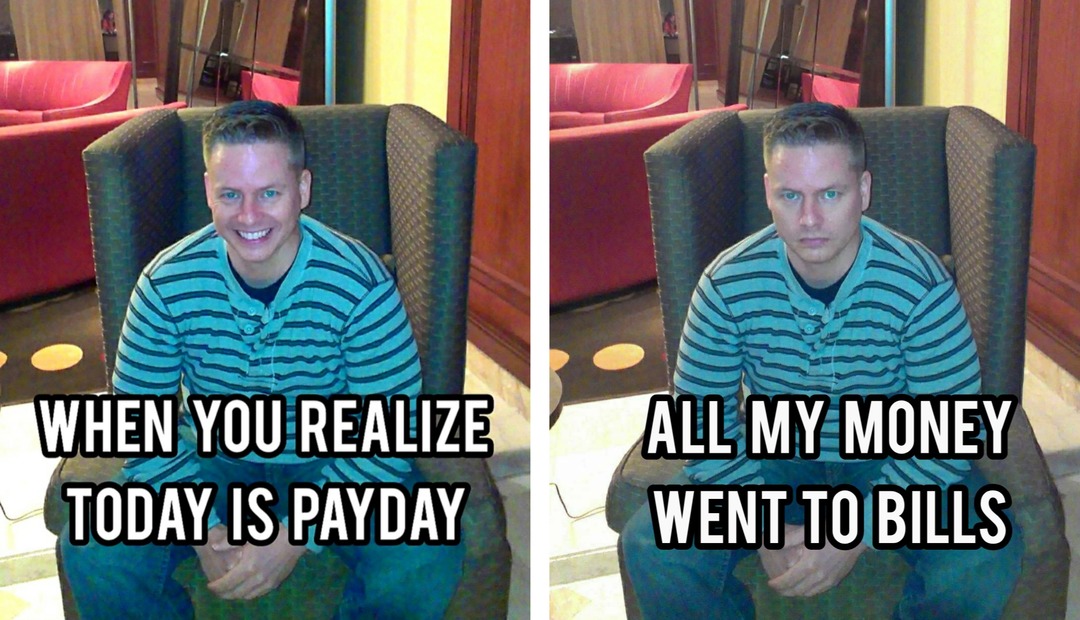No Money For Food Until Payday

For millions of Americans, the period between paychecks has become a tightrope walk, fraught with difficult choices and the constant threat of running out of money for basic necessities, particularly food. A recent survey highlights a growing trend: an increasing number of individuals and families are finding themselves with no money for food until payday, forcing them to rely on food banks, credit, or simply go without.
The Growing Struggle: Food Insecurity on the Rise
The U.S. Department of Agriculture (USDA) defines food insecurity as a lack of consistent access to enough food for an active, healthy life. While the national food insecurity rate has fluctuated in recent years, data suggests that the problem persists, particularly among low-income households, single-parent families, and communities of color. The current economic climate, characterized by inflation and stagnant wages, is exacerbating the situation.
A recent study by Feeding America, a nationwide network of food banks, revealed that demand for emergency food assistance has surged in many areas. Food banks are reporting a significant increase in the number of new clients seeking help, many of whom are employed but struggling to make ends meet.
"We're seeing a lot of people who have never needed our services before," says Claire Babineaux-Fontenot, CEO of Feeding America. "They're working, but their paychecks just aren't stretching far enough to cover all their expenses, including food."
Who is Affected and Why?
The issue of running out of money for food before payday disproportionately affects certain demographics. Low-wage workers, often employed in industries like retail, hospitality, and service sectors, are particularly vulnerable. These jobs often come with unpredictable hours and limited benefits, making it difficult for individuals to budget effectively.
Rising housing costs and healthcare expenses also contribute to the problem. With a significant portion of income going towards rent or mortgage payments and medical bills, less money is available for food and other essential items. Transportation costs, especially in areas with limited public transit, can further strain already tight budgets.
Single-parent households face unique challenges, often relying on a single income to support an entire family. The cost of childcare can be a major barrier to employment, limiting opportunities for advancement and financial stability. Benefit cliffs, where small increases in income lead to a loss of government assistance, can also trap families in a cycle of poverty.
Coping Mechanisms: How People Are Getting By
When faced with the prospect of running out of food, individuals and families resort to various coping mechanisms. Many turn to food banks and other charitable organizations for assistance. While these resources provide a vital safety net, they are often stretched thin and unable to meet the growing demand.
Another common strategy is to rely on credit cards or payday loans to cover food expenses. However, this can lead to a cycle of debt, as high interest rates and fees make it difficult to repay the borrowed money. Some individuals may also skip meals or reduce portion sizes to make their food last longer, which can have negative health consequences.
Some families rely on government assistance programs like the Supplemental Nutrition Assistance Program (SNAP), formerly known as food stamps. However, eligibility requirements can be strict, and the amount of assistance provided may not be sufficient to cover all food needs.
The Impact on Health and Well-being
Food insecurity can have a significant impact on physical and mental health. Lack of access to nutritious food can lead to malnutrition, weakened immune systems, and increased risk of chronic diseases. Children who experience food insecurity are more likely to have developmental delays and academic problems.
The stress and anxiety associated with not knowing where the next meal will come from can also take a toll on mental health. Individuals struggling with food insecurity may experience feelings of shame, hopelessness, and depression.
Long-Term Consequences
The long-term consequences of widespread food insecurity are significant. A nation where a substantial portion of the population struggles to afford food is less productive, less healthy, and less resilient. Addressing this issue requires a multi-faceted approach that includes increasing wages, expanding access to affordable housing and healthcare, and strengthening social safety net programs.
The rise in food insecurity serves as a stark reminder of the economic challenges facing many Americans. Finding solutions to ensure that everyone has access to enough food is not just a matter of compassion; it is essential for building a stronger and more equitable society.

















